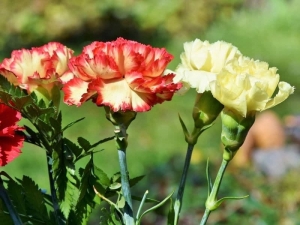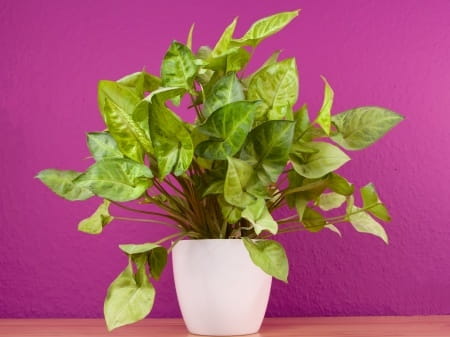When grown in gardens, Carnations grow to between 6 and 8.5 cm in diameter. Petals on Carnations are generally clawed or serrated.
Carnations are bisexual flowers and bloom simply or in a branched or forked cluster. The stamens on Carnations can occur in one or two whorls, in equal number or twice the number of the petals.
The Carnation leaves are narrow and stalk less and their color varies from green to grey-blue or purple. Carnations grow big, full blooms on strong, straight stems.
Carnations belong to the genus Dianthus. These flowers are commonly used in cut flower arrangements and come in a variety of colors, as well as some being variegated or veined with contrasting colors.
The foliage is gray-green and stems don’t generally get above 12 inches tall. The flowers are often heavily scented.
Dianthus caryophyllus, commonly known as the carnation or clove pink, is a species of Dianthus. It is probably native to the Mediterranean region but its exact range is unknown due to extensive cultivation for the last 2,000 years.
We’ll be sharing more about this flower in future.






